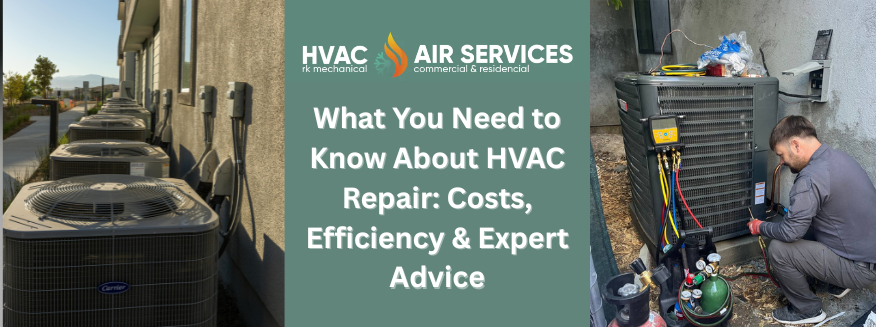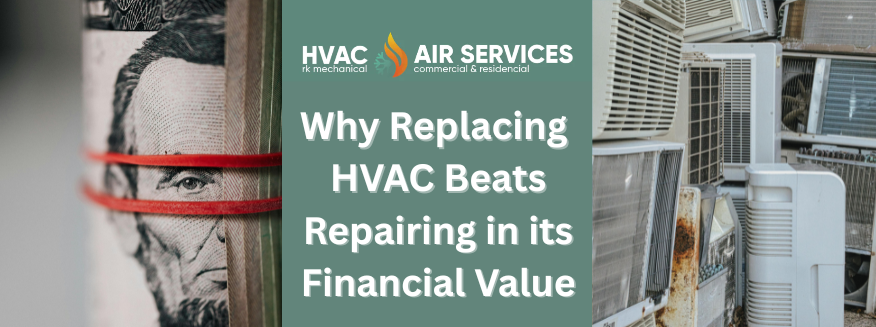So, you’re finally ready to upgrade your home’s heating system? Whether you want to keep your space cozy during winter or enhance energy efficiency, getting a furnace installation or replacement is a big step.
But before the professionals show up with your brand-new system, there’s some essential prep work to do. You don’t want to leave things until the last minute and find yourself scrambling when the installers arrive. This guide will walk you through everything you need to know to get your home ready for a furnace installation or replacement.
Choose the Right Furnace
You can’t install what you don’t have. So, the first step is selecting the right furnace for your home. Here are the main factors to keep in mind:
- Size and Capacity: Ensure your furnace’s size and capacity are suitable for your home’s square footage. An undersized unit will struggle to heat your space, while an oversized furnace will cycle on and off too frequently, wearing it out quickly.
- Fuel Source: Are you using gas, electric, or oil? Make sure you’re clear about the type of furnace that works with your existing system.
- Efficiency Rating: If energy savings are important, look for furnaces with high AFUE (Annual Fuel Utilization Efficiency) ratings. These will save you money in the long run and are better for the environment.
Schedule the Installation Date and Time
Furnace installation or replacement isn’t a 10-minute job. Depending on the complexity of your current system and your home’s layout, this can be a multi-hour or even multi-day project. You’ll need to schedule the installation date and time with the contractor or HVAC professional well in advance.
Here are some things to consider:
- Plan Ahead: Schedule the installation during the offseason if possible—spring or fall—when HVAC companies are less busy. This might even get you a discount.
- Allot Enough Time: Block out enough time for the entire installation process. It’s a good idea to take the day off or work from home to supervise and be available for any questions.
- Prepare for Downtime: Depending on your home’s size and the job’s complexity, your heating might be off for several hours or more. If it’s winter, plan how you’ll stay warm during that time.
Clear the Work Area
The furnace is often tucked away in a basement, attic, or utility room, which can easily get cluttered. Clear out space so the professionals have ample room to work:
- Move Stored Items: If your furnace is in the basement or garage, move any stored items, boxes, or tools that may block access to the furnace.
- Clear Pathways: Make sure the path leading to your furnace is free of any obstacles. This includes stairs, hallways, and doorways. The technicians may need to carry heavy equipment and will appreciate easy access.
- Provide Electrical Access: The installers will likely need to use power tools, so make sure there’s an electrical outlet nearby or an extension cord available.
Make Your Home Safe for Technicians
Your home needs to be a safe environment for the furnace installers to work in, especially if they will be in your basement, attic, or crawl spaces. Double-check that your home is ready for their arrival:
- Clear Ventilation: Furnace installation often stirs up dust and debris. Ensure there is proper ventilation in the work area so that everyone, including the technicians, is breathing clean air.
- Remove Pets and Children: If you have pets or small children, it’s best to keep them away from the work area for safety reasons.
Inspect the Ductwork and Vents
Before your new furnace gets installed, it’s a good idea to check your ductwork and vents. Clean ducts and properly placed vents ensure that your new furnace operates efficiently:
- Clean Ducts: If it’s been a while since your ducts were last cleaned, consider having them cleaned before the furnace installation. Clean ducts will prevent dust from circulating in your home when the furnace is first turned on.
- Check for Leaks: Inspect your ductwork for any leaks or gaps, especially around joints and seams. Leaky ducts will cause your new furnace to work harder than necessary, reducing its efficiency.
- Check Airflow: Ensure that no vents are blocked by furniture or other obstructions. Proper airflow is essential for maintaining a consistent temperature throughout your home.
Plan for Disposal of the Old Furnace
If you’re replacing an old furnace, you’ll need to figure out what to do with the old unit. Most HVAC companies offer furnace disposal as part of the installation service, but it’s a good idea to confirm this beforehand:
- Ask About Removal: Verify with your HVAC contractor if they will handle the removal and disposal of the old furnace. If not, you’ll need to arrange for its removal.
- Disposal Fees: Some companies may charge an additional fee for furnace disposal. Make sure you’re aware of any extra costs upfront so there are no surprises.
Secure Proper Permits and Inspections
In California, you may require permits for furnace installation or replacement, and in some cases, an inspection is needed after the installation is completed:
- Check Local Regulations: Ask your contractor if permits are required for your furnace installation. Some companies will handle this for you, but it’s always good to double-check.
- Schedule Inspections: After installation, a local inspector may need to review the work to ensure it meets safety codes and standards. Your contractor can often help schedule this but be aware that you might need to be available.
Know What to Expect on Furnace Installation Day
When installation day arrives, you should have a good idea of what’s going to happen. Understanding the process helps you stay prepared and ensures that everything goes smoothly:
- Pre-installation Checklist: Before the furnace is installed, the technicians will inspect the work area and may need to make adjustments to your existing setup (such as resizing ducts, adjusting vent locations, or reinforcing flooring for heavier units).
- Installation Time: Depending on the complexity of the system and the size of your home, installation can take anywhere from 4 to 10 hours. If it’s a replacement, the process may be quicker, but make sure to ask your technician for a timeline.
- Post-installation Testing: Once the furnace is installed, the technician will test it to ensure it’s running efficiently. They’ll also check that the thermostat works with the new system and may walk you through how to adjust the settings.
FAQs About Furnace Installation or Replacement
What starts first on a furnace?
When you turn on your furnace, the sequence typically starts with the thermostat sending a signal to the furnace control board. This triggers the ignition process, where the draft inducer motor kicks in to clear out any remaining combustion gases.
Once the air is clear, the furnace igniter lights the burner, allowing gas to flow and heat the air, which is then circulated by the blower motor through your home.
What routine maintenance is required for a furnace?
Routine furnace maintenance is essential to ensure efficient operation and longevity. Key tasks include:
- Changing or cleaning the air filter (typically every 1-3 months, depending on usage and filter type)
- Inspecting and cleaning the burners and flame sensor to prevent ignition issues
- Checking and lubricating the blower motor to ensure proper airflow
- Testing the thermostat and safety controls to maintain consistent and safe operation
- Examining the heat exchanger for cracks or signs of wear, which could lead to carbon monoxide leaks
We also recommend scheduling a professional furnace tune-up annually to catch any potential issues early.
Wrapping It Up: You’re Ready for Furnace Installation Day!
Getting a furnace installation or replacement is a major upgrade for your home, and being prepared can make the process stress-free and seamless. By following this ultimate checklist, you’ll ensure that everything starts off on the right foot.
So, are you ready to schedule a furnace installation or replacement? Our experts are ready to assist you and answer any questions you may have about prepping for your installation. Contact us today for reliable furnace installation and replacement services.





































